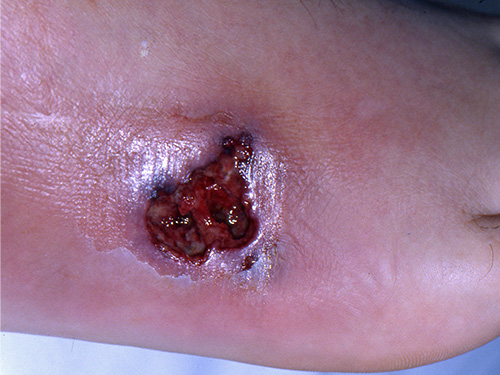Pyoderma gangrenosum
Pyoderma gangrenosum is a destructive, noninfective inflammatory ulcer of unknown cause. It is often painful, and usually begins as an inflammatory papule or pustule that breaks down to form an enlarging ulcer. The ulcer has characteristic raised purplish undermined edges, and can stabilise or expand in size (slowly or rapidly). Ulcers may be single or multiple. For a photo of pyoderma gangrenosum, see here.

The histology of pyoderma gangrenosum is nonspecific. Biopsy and cultures are usually required to exclude other diagnoses (eg vasculitis, atypical infection, Behçet syndrome, malignancy).
If pyoderma gangrenosum is suspected, urgently refer the patient to a dermatologist for assessment and treatment. Liaise with the dermatologist regarding initial treatment (eg oral corticosteroid) while waiting for full assessment. Management of pyoderma gangrenosum requires immunosuppression, and usually involves pain management (eg opioids initially) and use of special dressings.
Surgical debridement of pyoderma gangrenosum is contraindicated because the trauma of debridement can exacerbate the condition.
Pyoderma gangrenosum is sometimes associated with an underlying disease (eg inflammatory bowel disease, inflammatory arthritis, myeloproliferative and lymphoproliferative disorders); however, in up to 50% of cases, no associated condition is found. Management also involves assessment for and treatment of associated conditions if present.
